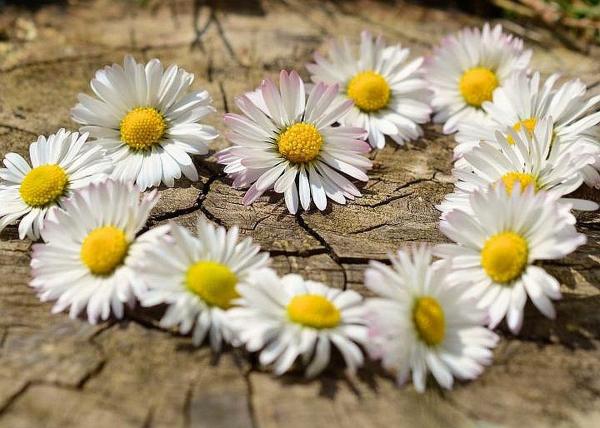Drippin’ Gardening, April 11

Every month has birthstones, and as we have been learning, each month has birth flowers as well. The question many of you have asked is, “How did this come to be?” After having been ask that question over a dozen times I decided that I really needed to do some research and what follows is what I have learned.
There are many legends about the history of birth flowers, but the consensus seems to be that they originated during ancient Greece. The altars of the twelve Greek gods were decorated with flowers in honor of their birthdays. Each god was believed to have a distinct personality as well as a favorite flower, so these plants became imbued with meaning and served as living connections to the gods.
Over the years, folklore has surrounded the significance of various flowers and plants. Although they were originally used as a decoration, flowers came to be used as symbolic gifts associated with specific meanings and a month. People all over the world give flowers to celebrate special occasions. Most months have a couple of birth flowers to choose from and they are usually received in delight as beautiful expressions of caring. When selecting flowers, we are often swayed by their coloration and aroma; including flowers with symbolic meanings makes the bouquet much more sentimental. Bouquets in April should include the Daisy or the Sweet Pea as they are the April birth flower and birth flower alternate respectfully.
By the time April arrives, spring is in full bloom in most parts of the country. The birthday flowers for April are cheerful, fun and colorful. All this makes the daisy and the sweet pea the perfect choices for April.
Daisies symbolize childhood innocence, simplicity and joy, which makes them a wonderful choice to give in a spring bouquet or to grow in your garden. Daises, of course, are close cousins to sunflowers and the three most popular varieties are the Shasta daisy, African daisy and Gerbera daisy. Shasta’s have snowy white petals with bright yellow centers and make great cut flowers. African daisies grow closer to the ground and have white, orange, yellow or apricot flowers. Gerbera daisies (or gerberas) are the most popular daisies and their large blooms can be found in a rainbow of bright colors, including pink, white, yellow, orange, cream, red and violet. The center of the flower can be almost any color and often a single flower will have petals of many different colors.
Interestingly, the gerbera daisy (gerbera jamesonii) was discovered in 1884 near Barberton, South Africa, by a Scotsman named Robert Jameson. Breeding programs that began in England in 1890 perfected the flower’s quality and colors, making them a favorite among both gardeners and the givers of bouquets. The gerbera is still the fifth most popular bouquet flower in the world behind the rose, carnation, chrysanthemum, and tulip.
There are many meanings assigned to the gentle daisy, some have to do with their colors; everything from innocence, simplicity and joy to happiness, good luck and new beginnings. In Victorian times, daisies stood for loyalty and trust.
Daisies are highly popular flowers with a long and rich history. Cultures around the world have legends associated with the daisy and they have been found in stone carvings going back to 3000 BC.
The name daisy may be explained by its natural behavior; it is thought by many that the name “daisy” is a variation of “day’s eye” because the whole flower head closes up at night and opens up again in the morning light.
Its button-like center, a densely packed cluster of many florets, could be interpreted to be much like a ‘days eye’. I’m none too sure about that I tend to agree with others who say the word daisy comes from the Greek translation meaning pearl because when millions of daisies are seen in an open field, they can look like pearls. While many disagree about how they got their name everyone agrees that they are beautiful.
The daisy is a flower that perfectly captures the essence of Spring with its happy-go-lucky, forever-young attitude that is thought to bring good fortune. Remember playing the game where you pluck the petals and ask a question? She loves me, she loves me not…
The daisy is thought of as the flower of love that conquers all due to its association with April and the goddesses of Love, Venus and Aphrodite. There is also a story in Roman mythology of a nymph named Belides, who transformed herself into a daisy to escape unwanted attention from one of the Roman gods. This story gives daisies the added meanings of modesty and innocence. In Victorian times, daisies stood for loyalty and trust. The daisy is also historically given between friends with an intention to keep a secret, so another interpretation of the daisy is “I’ll never tell”.
Along with their rich symbolic meanings, daisies are ubiquitous and versatile. They propagate easily, make up nearly ten percent of all flowering plants on earth and are found on every continent except for Antarctica. Additionally, they have edible leaves and medicinal healing properties. They are one of the most popular flowers in the world.
April’s alternative birth flower is the sweet pea. The lovely sweet pea is a climbing garden plant known as the “Queen of the Annuals”. This fragrant flower can be traced back to 17th century Italy and was brought to England and cultivated for its sweet aroma. Its horticultural name, Lathyrus Odorous, is derived from the Greek for pea and the Latin for fragrant.
These flowers gained popularity in late Victorian gardens and were included in gift bouquets sent to convey gratitude. They were adopted as the Royal Floral Emblem of Edwardian England and were an important part of floral arrangements for every wedding and dinner party during that period. Additional meanings of the sweet pea are delicate pleasure, blissful pleasure and good-bye.
The sweet pea continues to be used in floral decorations and wedding bouquets for its exquisitely soft, paper-like texture and pretty pastel color palette ranging from purples, pinks and creams to salmon as well as two-toned varieties and its sweet fruity fragrance. But beware, despite its name and delicious perfume, the seeds of the sweet pea are poisonous if ingested.
If you choose to grow the sweet pea, keep in mind that the vines need full sun and rich, well-drained soil to flourish. I have found that Sweet peas are one of the easiest flowering annuals to start from seed. Sweet peas are commonly direct seeded in the garden. The best tip I can offer for helping you to grow these lovely flowers is to give them a site with full sun and deep, rich, loamy, moist but well-drained soil. Be sure to add plenty of organic matter as well, (compost, well-rotted manure, leaf mold, or humus) to enrich the soil and make it more friable.
The Sweet Pea has plentiful blossoms and they are great to use as cut-flowers for decorations. The Old Farmer’s Almanac recommends that you, “Gather the flowers in the morning when the dew is still on them. This is when their scent is the sweetest.” You can even use their dried petals to make a delightful potpourri.
So, here’s to the April birth flowers, they bring us inspiration and joy. One of my favorite poets, Ralph Waldo Emmerson, summed it up well when he said, “The Earth laughs in flowers.”



